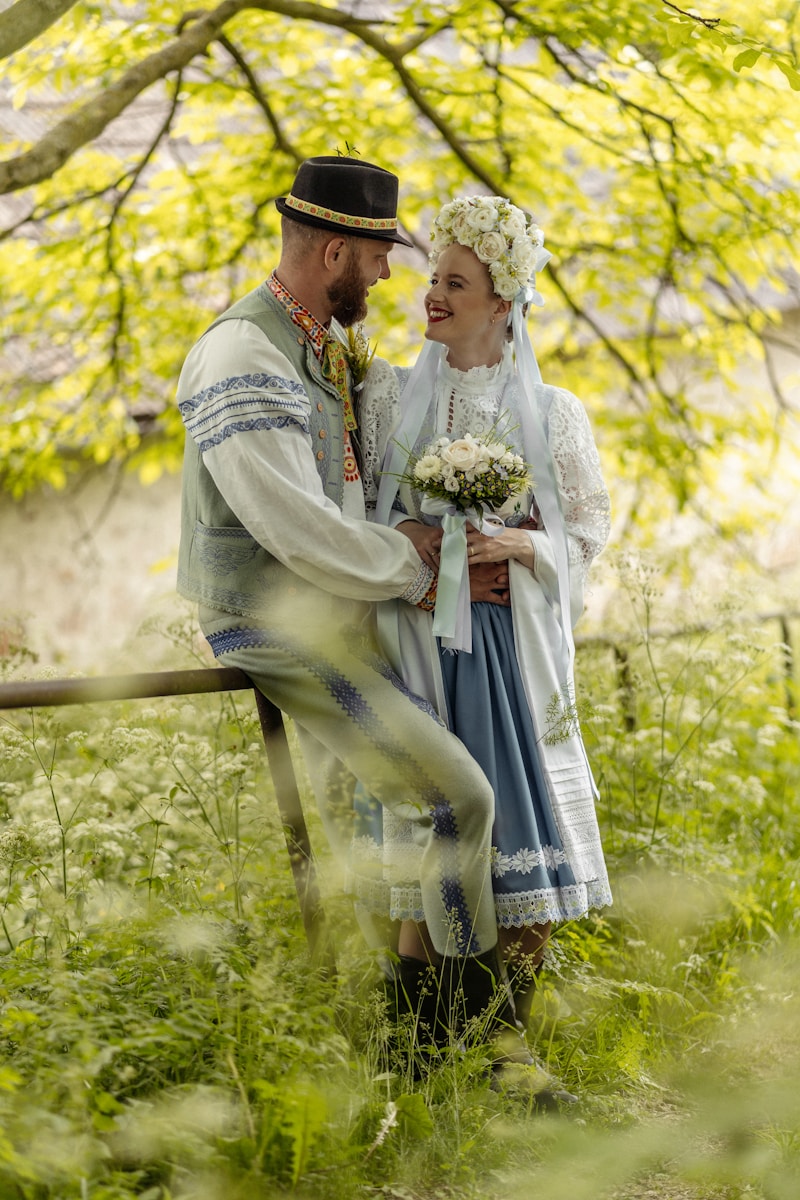Exploring Fashion Influences in Wedding Dress Silhouettes
Exploring Fashion Influences in Wedding Dress Silhouettes
Wedding dresses have always been a significant part of matrimonial celebrations, evolving through ages under the influence of various fashion trends. The silhouettes of these dresses are not just about fabric and cut; they reflect societal values, cultural backgrounds, and personal preferences. In this article, we will delve into the significant fashion influences that shape wedding dress silhouettes, examining the trends that have defined bridal wear over the years. We will also explore related topics such as sustainable fashion, cultural representations, and evolving body positivity that impact modern designs.
The Evolution of Wedding Dress Silhouettes
The history of Wedding gowns dates back centuries, with silhouettes evolving through different fashion eras. The following table summarizes key historical silhouettes and the fashion trends that influenced them:
| Era | Silhouette | Fashion Influence |
| Victorian Era | A-line and Bustle | Romanticism and elaborate detailing |
| 1920s | Empire waist and Flapper | Post-war liberation and jazz influence |
| 1950s | Ball gown | Hollywood glamor and feminine ideal |
| 1970s | Bohemian and Simple | Counterculture and individualism |
| 2020s | Modern minimalism and tailored | Sustainability and body inclusivity |
Victorian Era: A Fairytale Foundation
The Victorian era laid the foundation for the bridal gown as we know it today. Queen Victoria herself popularized the white wedding dress in 1840. Wedding dresses became symbols of wealth and social status, often featuring tight bodices and full skirts with crinolines and bustles. The influence of romanticism led to dramatic details, lace, and embroidery. This era emphasized femininity and elaborate craftsmanship, which remains evident in many contemporary designs.

1920s: A Rebellious Shift
The 1920s marked a pivotal moment in fashion history, where the silhouette transitioned to the more relaxed empire waist and flapper styles. This change reflected the post-war liberation movement, with women seeking freedom from restrictive clothing. Wedding dresses became more accessible, incorporating lighter fabrics and simpler designs that mirrored the jazz age's carefree spirit. Bridal wear began to reflect individuality rather than adherence to societal norms.
1950s: Embracing Feminine Glamour
The 1950s reintroduced the ball gown silhouette, characterized by a cinched waist and voluminous skirt. Influenced by Hollywood glamour and icons like Grace Kelly and Audrey Hepburn, bridal designs celebrated femininity and elegance. Fabrics like satin and tulle became popular, adorned with beading and embroidery, projecting a romantic yet glamorous aesthetic. This era solidified the idea of the wedding dress as a central focal point of the marriage ceremony.
1970s: Bohemia and Individual Expression
The 1970s brought a radical shift in wedding dress silhouettes, reflecting the counterculture movement. Simplified styles emerged, including bohemian and free-spirited designs that embraced individuality and comfort. These dresses often featured flowing fabrics, long sleeves, and more relaxed fits. The emphasis was on personal expression rather than tradition, with many brides opting for non-traditional colors and styles.
Modern Influences and Trends
The 21st century has seen a remarkable transformation in wedding dress silhouettes, driven by various influences, including sustainability, cultural diversity, and body positivity. Today's bridal market caters to a wide range of body types and personal styles, moving away from one-size-fits-all designs. The modern bride often seeks dresses that suit her personal taste while being reflective of broader social movements.
Sustainable Fashion in Wedding dresses
As society becomes more eco-conscious, sustainable fashion has gained momentum in the wedding industry. Designers are incorporating eco-friendly fabrics and practices, promoting gowns that not only look beautiful but also have a minimal environmental impact. The A-line silhouette remains particularly popular as it provides versatility for various body types while being achievable with sustainable materials.
Cultural Representations
Today's Wedding dresses frequently celebrate cultural diversity, with various traditions influencing designs. For instance, incorporating elements from different cultures, such as the Japanese kimono or Indian lehenga, showcases a blend of global influences. Such designs often feature intricate embroidery and luxurious fabrics, allowing brides to express their heritage while adhering to contemporary styles.
Body Positivity and Inclusive Designs
The body positivity movement has significantly impacted wedding dress silhouettes. Designers are increasingly focusing on inclusivity, creating gowns that cater to all body shapes and sizes. This shift eliminates the stigma associated with body image, allowing brides to feel empowered in their choices. Popular silhouettes include A-line, sheath, and mermaid, providing options that celebrate every woman’s unique silhouette.
Exploring More Bridal Fashion Questions
As we reflect on the evolution of wedding dress silhouettes, many brides-to-be may have other questions regarding bridal fashion. Here are some common inquiries:
- What are the trending Wedding Dress Styles for the upcoming year?
- How can I choose a silhouette that flatters my body type?
- What sustainable fabrics should I consider for my wedding dress?
- Are cultural designs acceptable for Modern weddings?
Each of these questions is integral to understanding personal style in bridal wear and navigating the myriad options available to today’s brides.
Conclusion: The Influence of Fashion in Wedding Dress Silhouettes
The fashion influences in wedding dress silhouettes are a rich tapestry woven from history, culture, and the evolving ideals of beauty and femininity. As we navigate through trends and styles, it becomes clear that Wedding dresses are not just garments; they are expressions of love, identity, and tradition.
In summary, when choosing a wedding dress, consider the influences that resonate with you personally. Whether you lean towards the romantic details of the Victorian era, the liberation of the 1920s, or the inclusivity of modern silhouettes, your choice should reflect your individuality and values. Remember to explore sustainable options and embrace your unique cultural heritage. Ultimately, your wedding dress is a celebration of you, and it should never compromise your comfort or style. Happy gown shopping!
